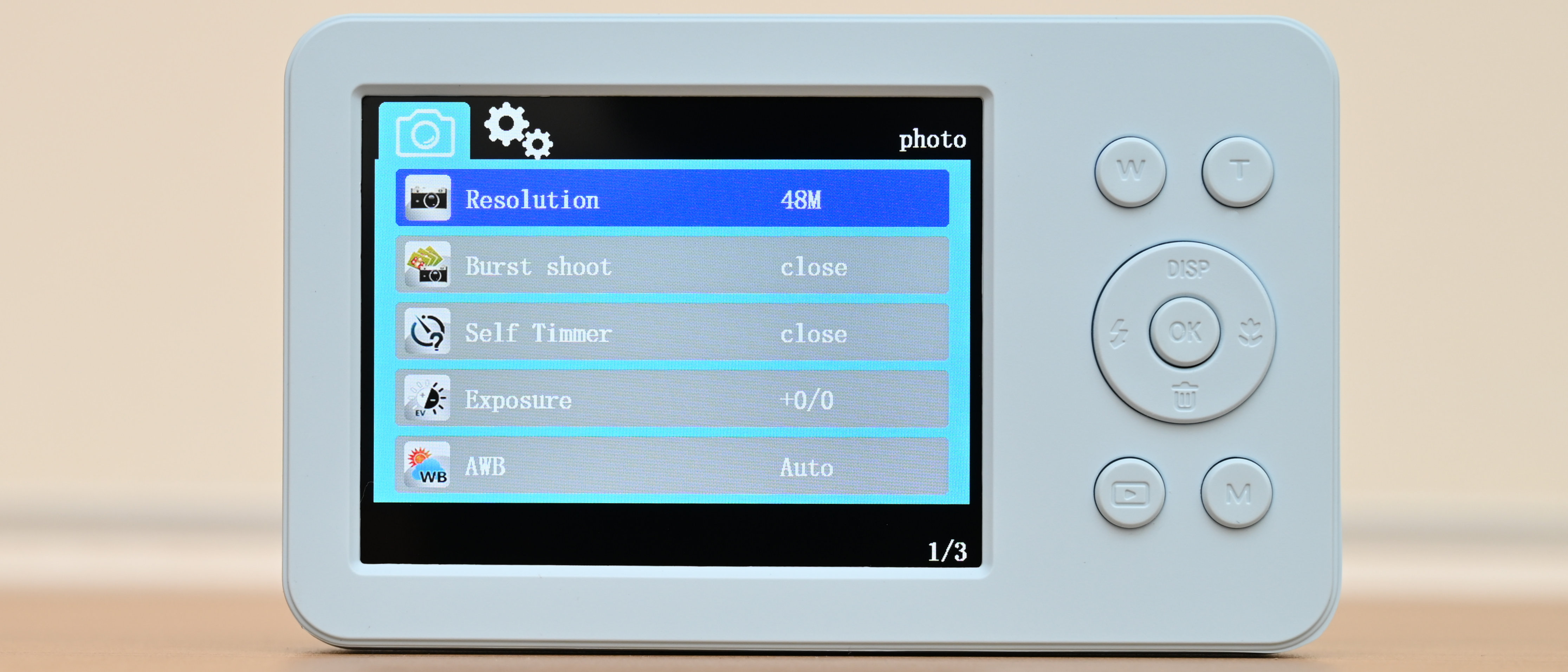I bought the cheapest compact camera on Amazon – it’s going straight back where it came from
A 48-megapixel digital camera for just $30 / £25 – how could I resist? Quite easily, as it turned out

As the old saying goes, ‘if something looks too good to be true, then it probably is’. But here’s the thing... I saw a 48-megapixel compact camera on Amazon for just $30/£25, in the pocket-slim shape of the Mutrain Digital Camera X10. Wow!
What’s more, the manufacturer promises it can ‘capture professional-grade photos anytime, anywhere’. I’d expect to pay about 200x the price for a 40+ megapixel camera that can take pro-grade images, like the Canon EOS R5 Mark II ($5399/£5749) or the Nikon Z 8 ($5099/£4839). I’m not entirely naïve but with Mutrain’s billing, I’d expect the X10 to at least be one of the best cheap cameras or the best cameras for kids out there.
But there’s even more. The camera comes complete with a 32GB microSD memory card, internal Li-ion battery, USB charging cable, wrist strap, drawstring pouch, and even a stick-on screen protector. Again, Wow! But the knockout wow factor came when I took my first photo with the camera and reviewed it on the screen.


I’ve literally never seen such appalling image quality from any kind of camera. It turns out (unsurprisingly) that the 48-megapixel image size is achieved by massively scaling up the output of the tiny image sensor, the physical size and megapixel count of which are unspecified by the manufacturer or in any of the advertising.
I’ve achieved massively better image quality from some of the cheapest disposable film cameras on the market, which at least have their own kind of retro, lo-fi character. The Mutrain is rubbish for fine detail, which turns to mush, has really poor dynamic range, and an Auto white balance that literally turned my gray skies pink.

The only useful thing about the camera is that it has a full-width selfie mirror, and even that’s only any good for maybe checking your hair and makeup. The actual photos are only fit for the bin, as is the camera itself. And the picture quality doesn’t just lag way behind any decent mobile phone made over the last 10 years or so.
For the sake of comparison, I dug out some images that I’d shot about 25 years ago on an Olympus C990Z (D490Z in the USA) with a humble 2.1MP image sensor. And guess what, those old Oly photos are in a completely different league, and almost infinitely better.
Get the Digital Camera World Newsletter
The best camera deals, reviews, product advice, and unmissable photography news, direct to your inbox!
But, there is one other useful thing about the Mutrain. It gives a reality check if my mind ever strays into the twilight zone of thinking that more megapixels equals better image quality, or that a quarter of a century of scientific progress means that a digital camera will automatically be better now than it was then.

Matthew Richards is a photographer and journalist who has spent years using and reviewing all manner of photo gear. He is Digital Camera World's principal lens reviewer – and has tested more primes and zooms than most people have had hot dinners!
His expertise with equipment doesn’t end there, though. He is also an encyclopedia when it comes to all manner of cameras, camera holsters and bags, flashguns, tripods and heads, printers, papers and inks, and just about anything imaging-related.
In an earlier life he was a broadcast engineer at the BBC, as well as a former editor of PC Guide.

